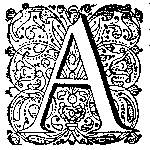Anna Maria Van Schurman’s Chinese Calligraphy
DOI:
https://doi.org/10.51750/emlc11103Keywords:
Sino-Dutch exchange, calligraphy, gift-giving, friendship, Anna Maria van SchurmanAbstract
Calligraphy is an understudied aspect of the reception of Chinese art in early modern Europe. Chinese visitors to Middelburg (1601) and Amsterdam (1654) first demonstrated it as a cultural practice. Other written samples circulated in the Dutch Republic, an emporium for Chinese goods. This article focuses on a previously unknown participant in this exchange: Anna Maria van Schurman, Europe’s first female university student, who had mastered various Asian scripts and was expected to try her hand at Chinese and Japanese. In 1637 Andreas Colvius sent her samples of East Asian writing to copy ‘by her own hand’. This exchange makes possible a transcultural study of the calligraphic gift. Via the popular writings of Matteo Ricci, Van Schurman’s correspondents may have learned about the role of calligraphy in fostering social relationships in late Ming China. Some of the visual and material qualities of East Asian writing must have made it look like a fitting tribute to a female European scholar of high profile and, in being exchanged as a gift, calligraphy acquired new meanings even while remaining illegible. In seventeenth-century China and Europe, the friendly exchange of calligraphy expressed new forms of sociability.
Downloads

Published
Issue
Section
License
Copyright (c) 2023 Thijs Weststeijn

This work is licensed under a Creative Commons Attribution-NonCommercial 4.0 International License.





